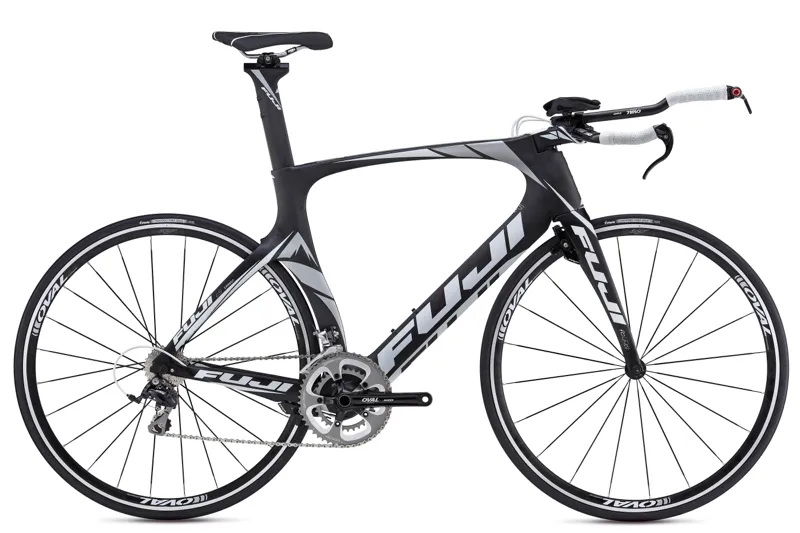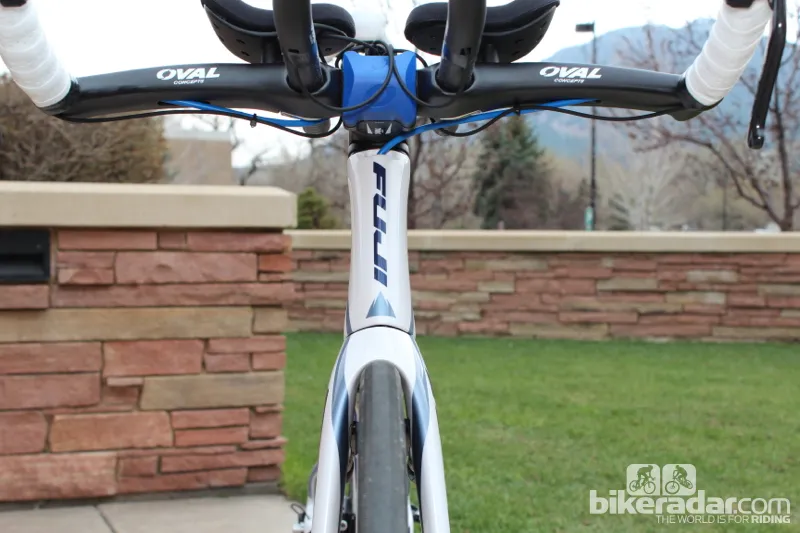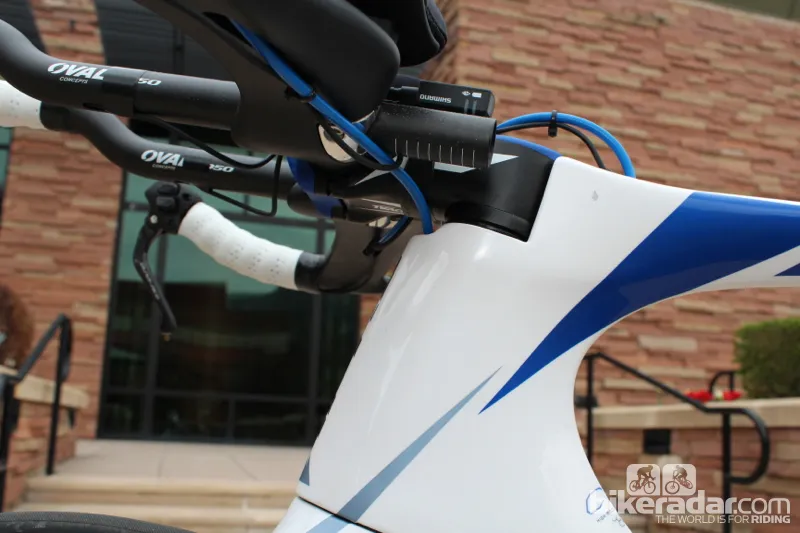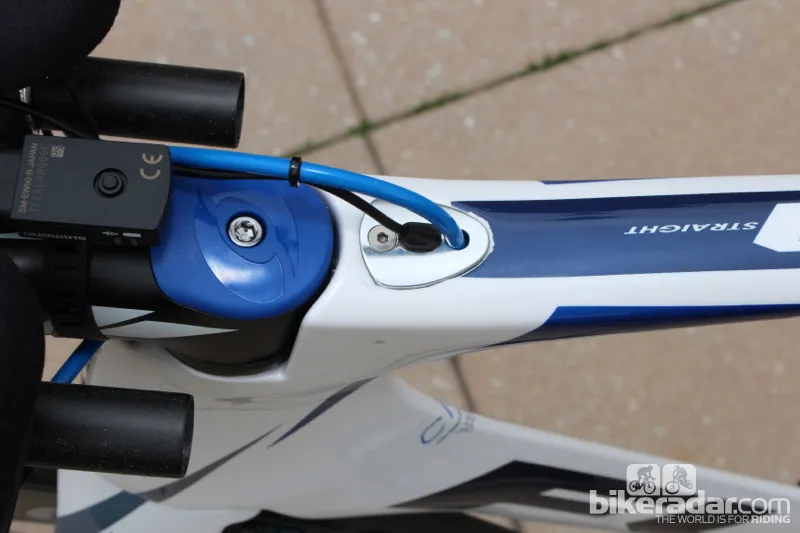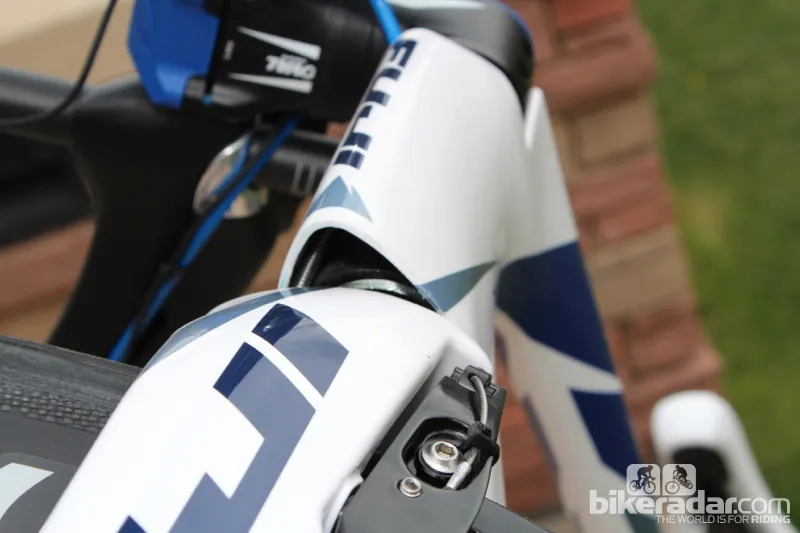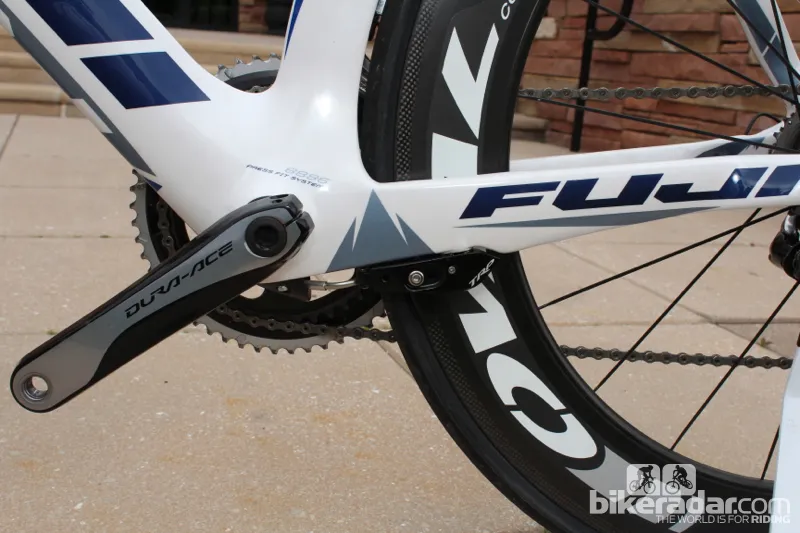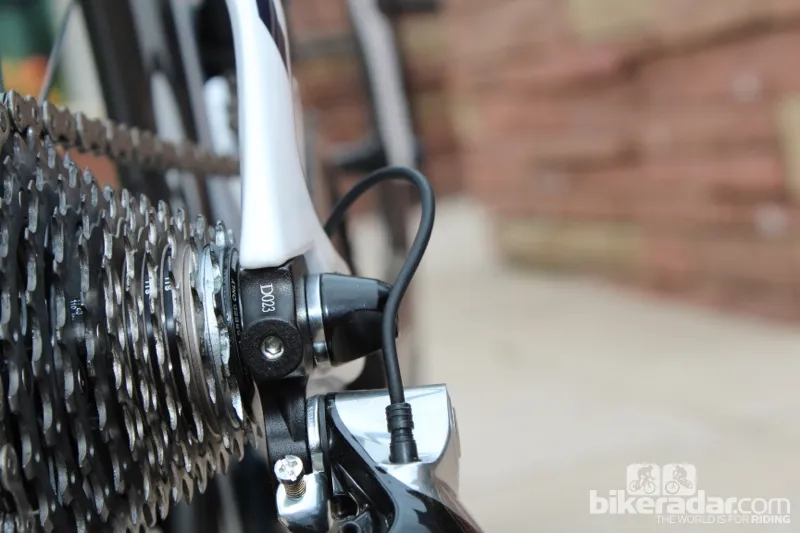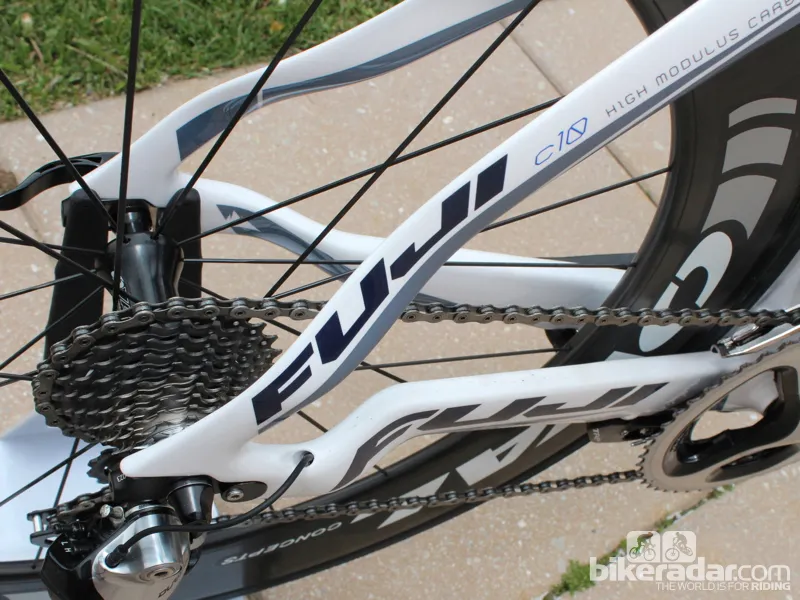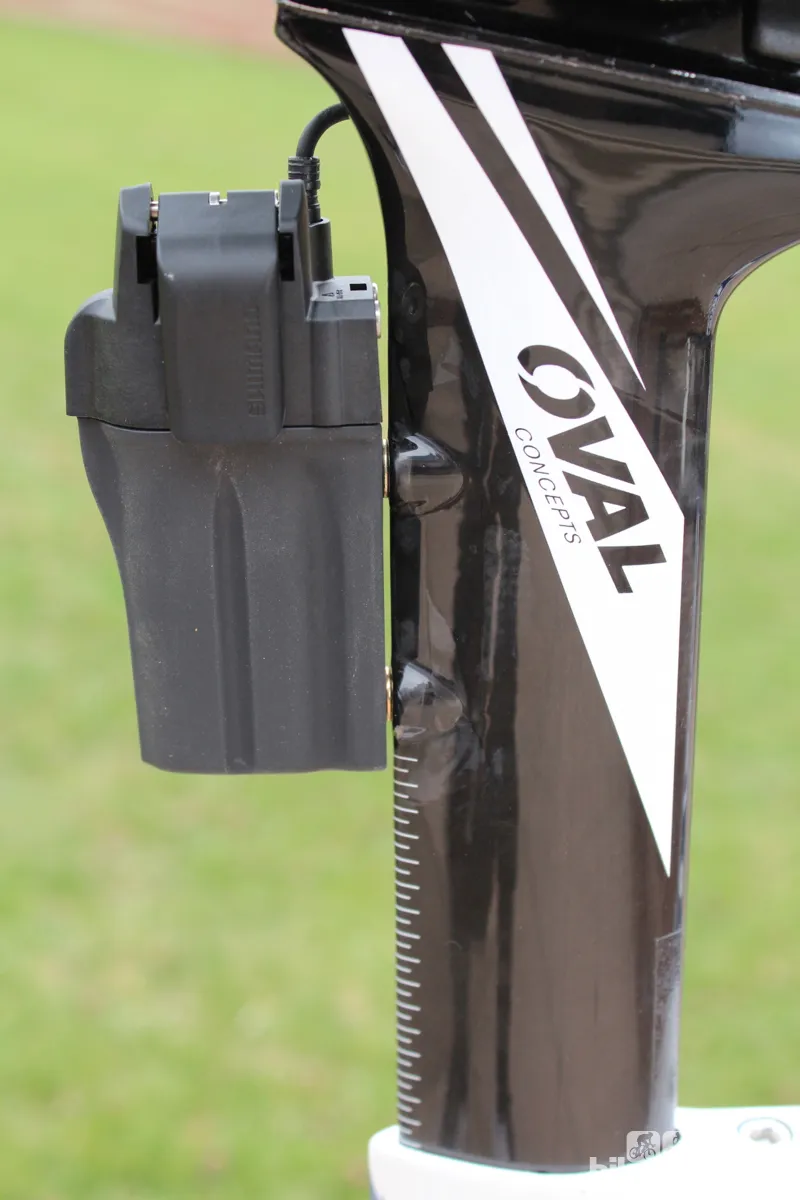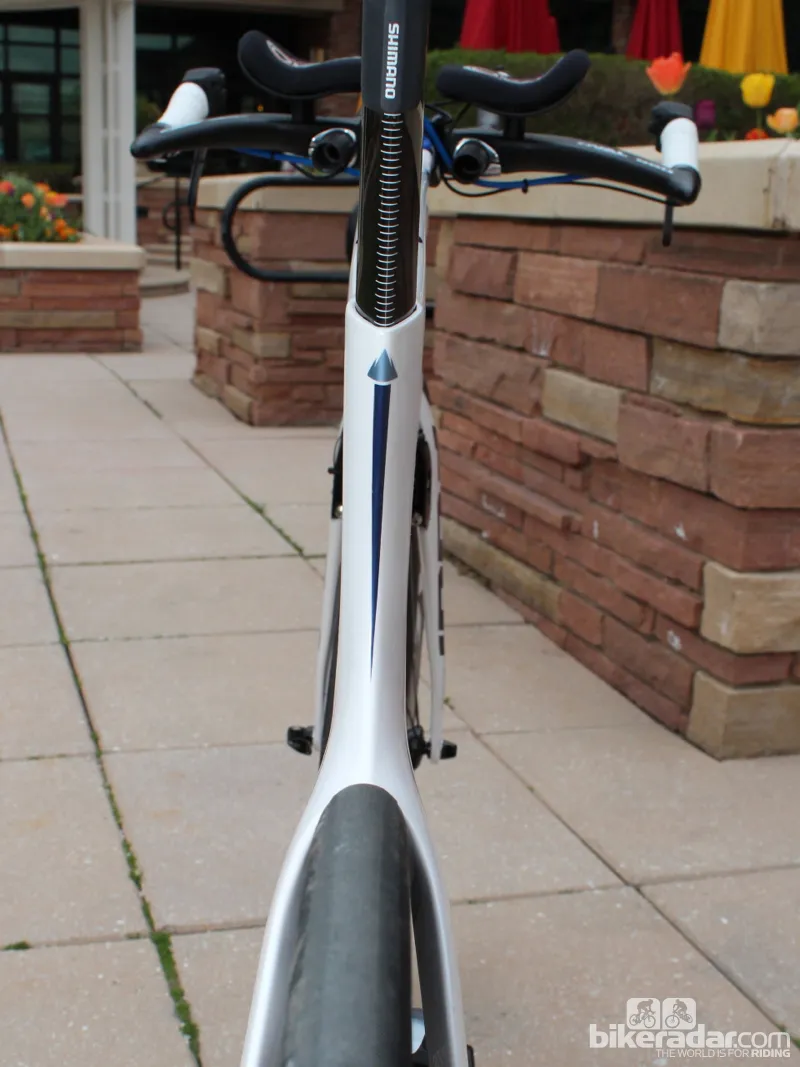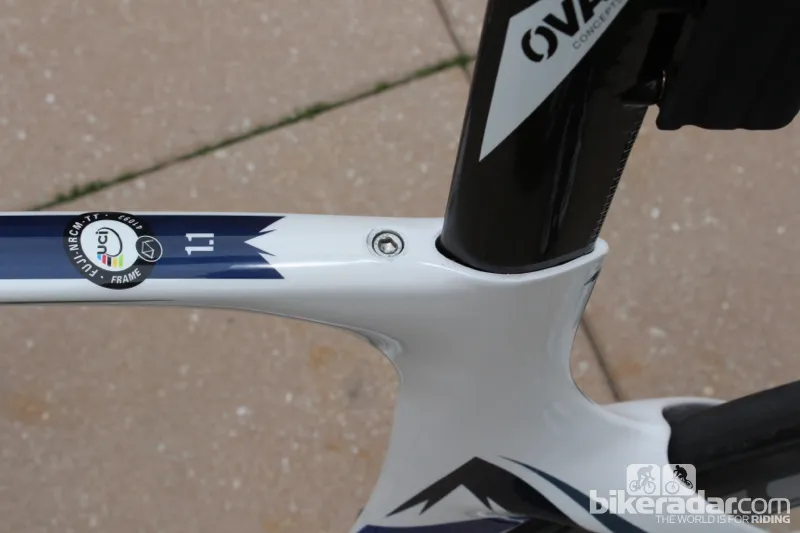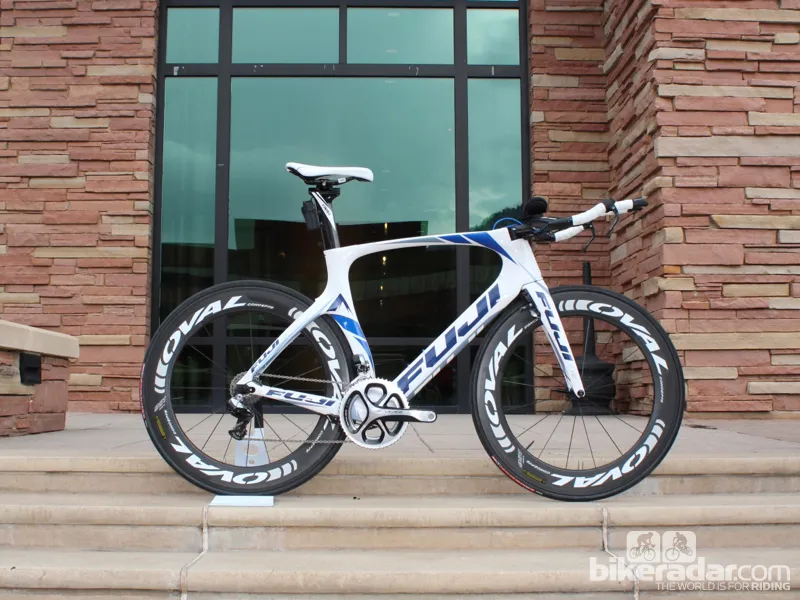On Tuesday in Boulder, Colorado, Fuji launched the Norcom Straight, which the company claims has more positioning options than any other top-end time trial/triathlon bike on the market.
Industry veteran Steven Fairchild, who started with Fuji in 1985, began work on the project three years ago with the goal of building a fast machine that looked as good to a fitter’s eye as it did to an aerodynamic engineer.
“We wanted to make a bike that fits the rider, instead of forcing the rider to fit the bike,” Fairchild said.
The five-bike line ranges from the US$7,499 1.1 with 11-speed Shimano Di2 to the US$2,299 2.5 with a mix of Shimano 105 and Tiagra. There is also a Matty Reed Signature bike in the works with Campagnolo Super Record EPS. UK pricing was not immediately available.
With the Norcom Straight, Fuji isn't staking claims to the lightest or the most aerodynamic – the frame is roughly 1,400g and Fairchild calls it “one of the fastest” TT/tri bikes in the world – but is bragging that the bike has “more positioning options than any other superbike”.
Beyond the common claims of ‘lighter, stiffer, more aero’, compared to past Fuji bikes, the Norcom Straight boasts a few cool touches, such as vertical dropouts that are horizontally adjustable and 'hidden' brakes with unique cable routing. It’s also quite likely the world’s first bike named after a Strava segment.
Fit options: Five sizes, 135mm cockpit height range, 74-81 degree seat tube
Early in the design phase, Fairchild regularly consulted with his fit database, which has the fit coordinates of more than 100 riders. “We wanted to have frame sizes that fit virtually everyone, from 5ft tall to 6ft 6in (165-197cm),” he said.
The end result was five sizes from a 49cm S to a 57cm XL, with a generous range of fore/aft and height adjustment at the saddle as well as at the cockpit.
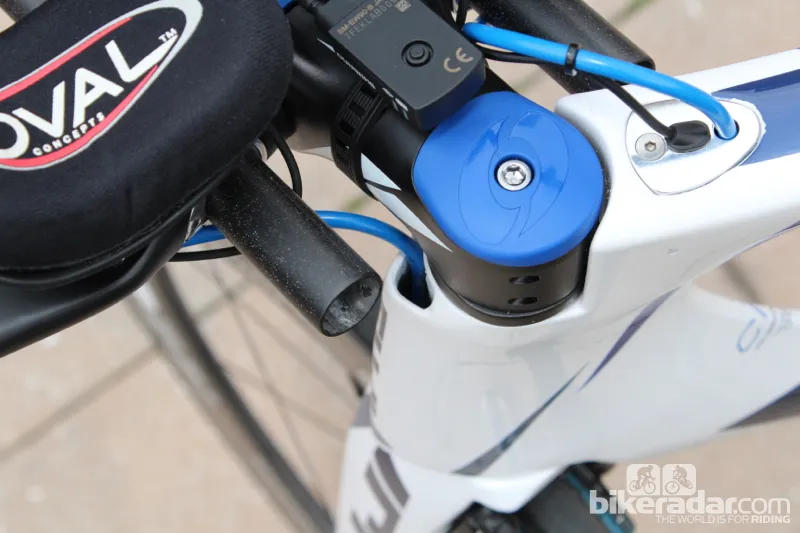
The stem sits flush with the top tube, where brake and shift cable enter the frame
An integrated Oval stem comes in six lengths (80-130mm) with four rise options ( /- 8 and 17). Combined with some spacer movement, the base bar height has 135mm of vertical adjustment. (Head tube heights range from 85mm for the S to 164mm for the XL.)
There are three arm rest widths, four riser height options, and five arm rest rotational positions. For extensions, there are three choices – straight, s-bend, and ski-bend. Each comes 376mm long, so will fit a tall rider, and can be cut down to fit smaller cyclists. The extensions are adjusted independently from the arm rest pads, however their angle is set by the angle of the base bar.
The clamp on the proprietary seatpost has 70mm of fore/aft adjustment, which equates to a range of seat tube angles from 74-81 degrees – plus, there's still the standard fore/aft of the saddle rails.
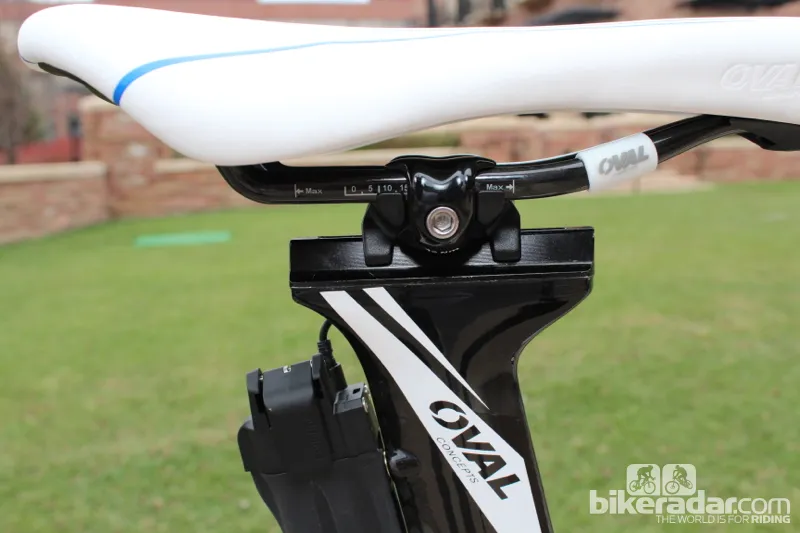
The seatpost has 70mm of adjustment above and beyond the standard saddle-rail adjustment
Construction: Aerodynamics, stiffness and adjustability
The Norcom Straight has an identical carbon frame shape across the range, with ultra-high modulus C10 carbon on the top two models and a high modulus C5 on the other three.
The frames use Fuji’s RIB technology, which acts as it sounds – internal carbon braces reinforce the tubing’s cross-section. Combined with the added girth of a PressFit BB86 shell, the Norcom Straight is 26 percent stiffer at the bottom bracket area than the D-6, Fuji’s previous time trial/triathlon bike. It’s also 20 percent stiffer at the head tube than the D-6.
Two notable things on the frame are the internal cable routing, especially for the front brake, and the vertical dropouts with horizontal adjustability.
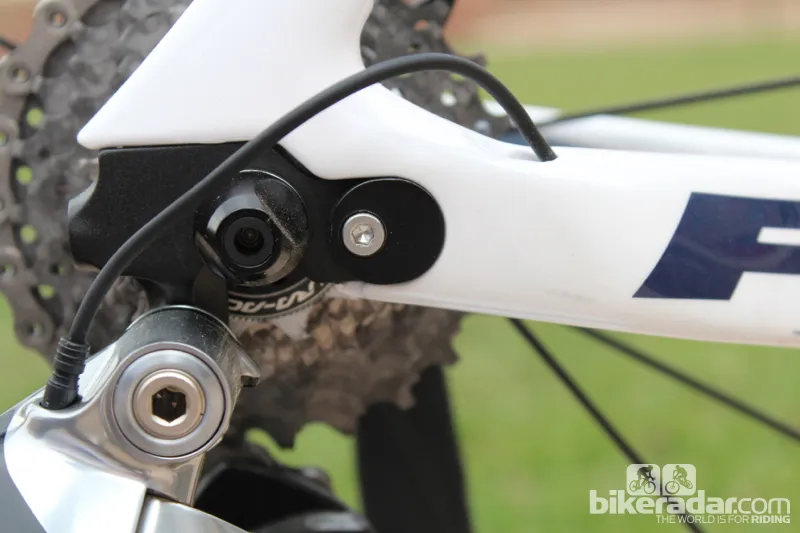
The vertical dropouts have horizontal adjustment
The front brake cable exits the base bar briefly before ducking into a pocket on the front of the head tube. From there, it exits into the center of the fork, then hooks round via a proprietary junction to tie into the TRP Aero TTV caliper that’s mounted on the back of the fork.
The other cables enter the frame at the top tube, just behind the stem, where interchangeable plates are used for mechanical or electric routing.
Some time trial bikes have horizontal dropouts, to tuck the rear wheel closely against the frame. Many bikes have vertical dropouts for ease of use. The Norcom Straight has both; the vertical dropouts are horizontally adjustable via a rear-facing bolt on each dropout. Once the desired position is achieved, a second bolt secures the dropout in place.
In terms of aerodynamics, Fuji developed the frame shape in the A2 Wind Tunnel in North Carolina using modular frame sections. The end result was a 16 percent improvement across the 0-20 percent yaw angles over the D-6.
Fuji made no claims in comparison to the competition, except to say the Norcom Straight is “one of the fastest”. That 16 percent increase over the D-6, Fairchild said, translates to a bike that’s 10 watts faster.
Five models: US$7,499 with Di2 to US$2,299 with 105/Tiagra
The Norcom Straight platform ranges from the US$7,499 1.1 with Shimano Di2 electric shifting down to the US$2,229 2.5 that uses a mix of Shimano Tiagra and 105 components.
All the bikes use Fuji’s house brand Oval wheels, cockpits and saddles of varying weight and performance levels. Complete specs for each bike are below. The same TRP Aero TTV brake calipers are used throughout the range.
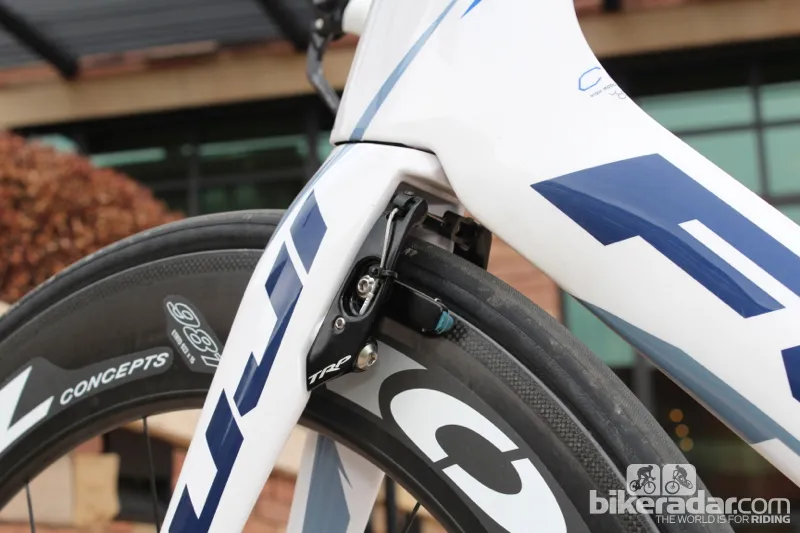
TRP Aero TTV calipers are used throughout the line
As a rule, a bigger price means bigger gears. The 1.1 has a 54/42 11-speed 9000 crankset, the 1.3 and 2.1 have the standard 53/39, while the 2.3 gets a semi-compact 52/36 and the 2.5 takes a compact 50/34.
A Matty Reed Signature Model is also in the works, which will use Campagnolo’s electric Super Record EPS group.
Norcom Straight 1.1
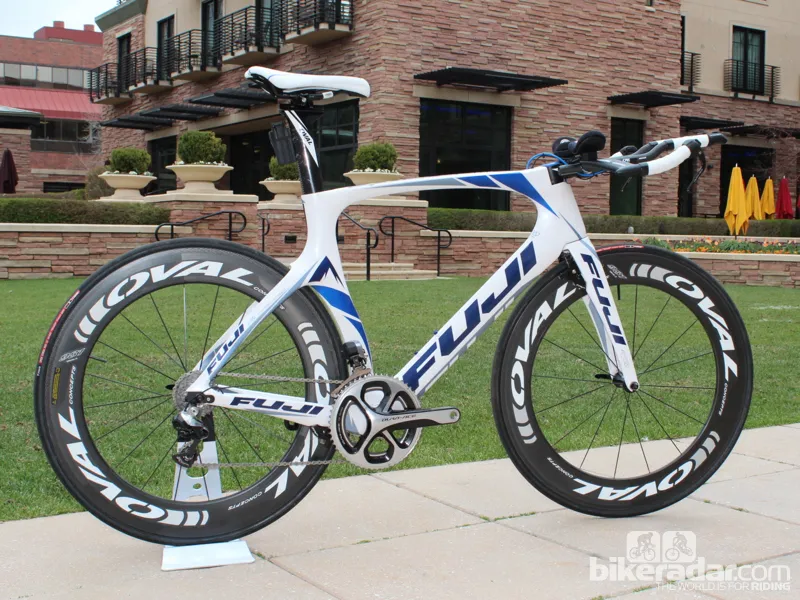
Norcom Straight 1.3
[Photo not available]
ArrayNorcom Straight 2.1
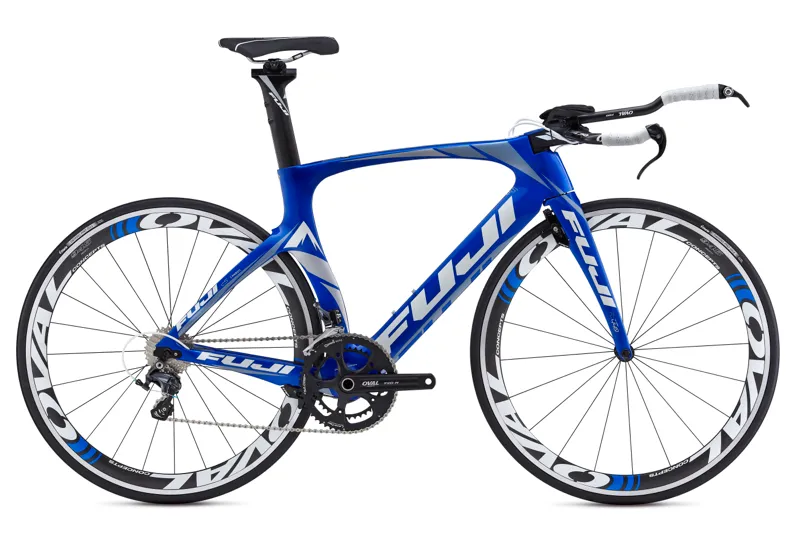
Norcom Straight 2.3
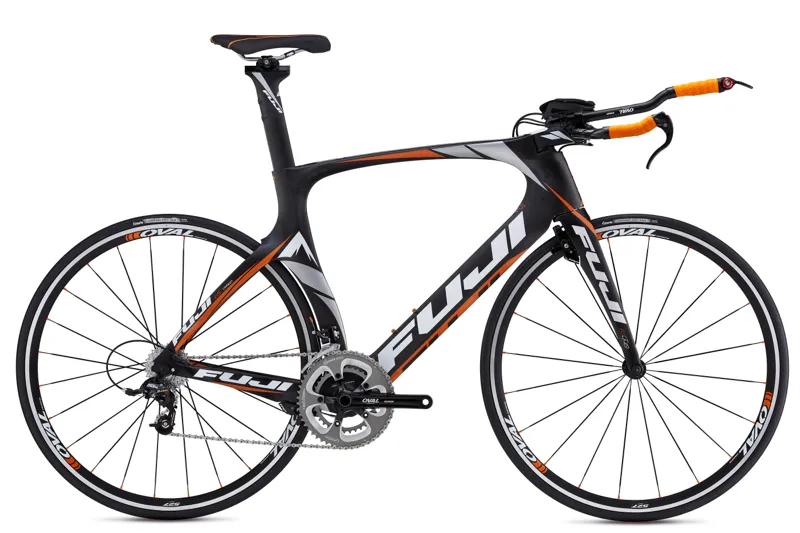
Norcom Straight 2.5
